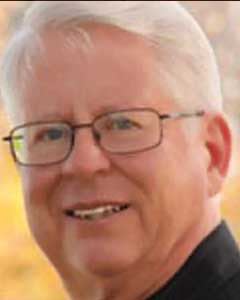This movie is a delight to see and to see again. The New Zealand landscape is breathtaking and the computer-generated fantasy places and monster hordes are awesome. Much of what a good flick should have in terms of entertainment value can be found here.
But The Lord of the Rings is much more than a distraction. It is a moral tale with a gripping storyline. Although scriptwriters Frances Walsh, Philippa Boyens and Peter Jackson take liberties with the J.R.R. Tolkien’s book and even if the imagination reflected on the screen is as much director Jackson’s as it is the author’s, you leave the theatre with substantial insights.
This is an adult fairy tale which first appeared in the 1950s. It became a 20th century bestseller, a tale which Tolkien, a practicing Catholic and Oxford linguist, wrote as a “true myth.” An animated version of the story made in 1978 was trashed, but this version, whether you have read the book or not, is well worth seeing.
Frodo Baggins (played by Wood), a very ordinary hobbit not easily pegged as hero material, finds himself on an incredible adventure involving a cosmic battle of good versus evil. He did not choose this journey. In the tradition of those who have greatness thrust upon them, Frodo’s task is to destroy an evil ring he has inherited from his uncle Bilbo Baggins (Hohm). The ring has the power to discharge hellish tribulation on Middle Earth, a mythic-place inhabited by a mix of hobbits, elves, dwarves and others.
The “fellowship of the ring” that undertakes this task is a motley assortment of cobbled-together allies. Frodo and some of his hobbit, dwarf and other friends escape the clutches of the Dark Lord, creator of the evil ring, who wants it returned. Their assignment is to return the ring to enemy territory – the place where it was created – and destroy it in the fires of Mordor at Mount Doom. Frodo assumes his duty and is invested by Galdriel (Blanchett), fair elfen queen, who, powerfully imbued with feminine charm, tells him that if he doesn’t return the ring, no one else will.
The ring clearly symbolizes both earthly and supernatural power. Tolkien was captivated by power’s constructive as well as its destructive dimensions and this element is depicted on film in a way that does him proud.
Directed by Peter Jackson
With Elijah Wood, Liv Tyler, Sean Bean, Viggo Mortenson, Ian McKellen, Christopher Lee, Ian Holm, Hugo Weaving, John Rhys-Davis, Orlando Bloom, Cate Blanchett.
New Line Cinema
Frodo finds power both a blessing and a burden in his fight against evil. Sarumen (Lee), the treacherous wizard, entices with a refined venom. We learn, to our chagrin, that even the good wizard Gandalf (McKellen) has a dark side, and that the normally pleasant Bilbo knows he must divest himself of the ring secretly while compulsively lusting after it. Not only are principalities and powers at work out there, they inhabit and engage each of us personally. Evil is good that has been twisted and perverted. Both are central to the story and there are times when the viewer will find it impossible to distinguish one from the other.
Major Christian and theological themes such as temptation, suffering, sacrifice and resurrection are intricately woven throughout, yet the film never preaches. Its way of addressing these profound, universal themes is by telling the story, graphically and winsomely.
The Lord of the Rings is a motion picture about desperate struggles against seemingly insurmountable odds. It is also pervaded by a profound sense of wonder. The landscapes traversed, the variety of characters encountered and the friendships shared all serve to fortify Tolkien’s strong conviction that the world is ultimately a good and beautiful place; well worth saving.
As much as this is a noble tale whose characters are dedicated to a definite purpose, we are also engaged by the truth that the journey is important in itself. Those who see Tolkien’s trilogy as merely a series of dramatic battles against evil forces, fail to understand Tolkien’s most important point, which hits home as the first film in this trilogy concludes.
The journey is as important as the destination. Tolkien is concerned about the values we espouse and how we live our lives. He is interested in what we learn from our experiences in order to continue purposeful living as wiser, more mature people.
This is really not a young children’s movie. There are violent, troubling scenes. It is, nevertheless, a story that reflective families should consider viewing and discussing together.
Rev. Wayne A. Holst is a writer who has taught mythology, religion and culture at the University of Calgary.




